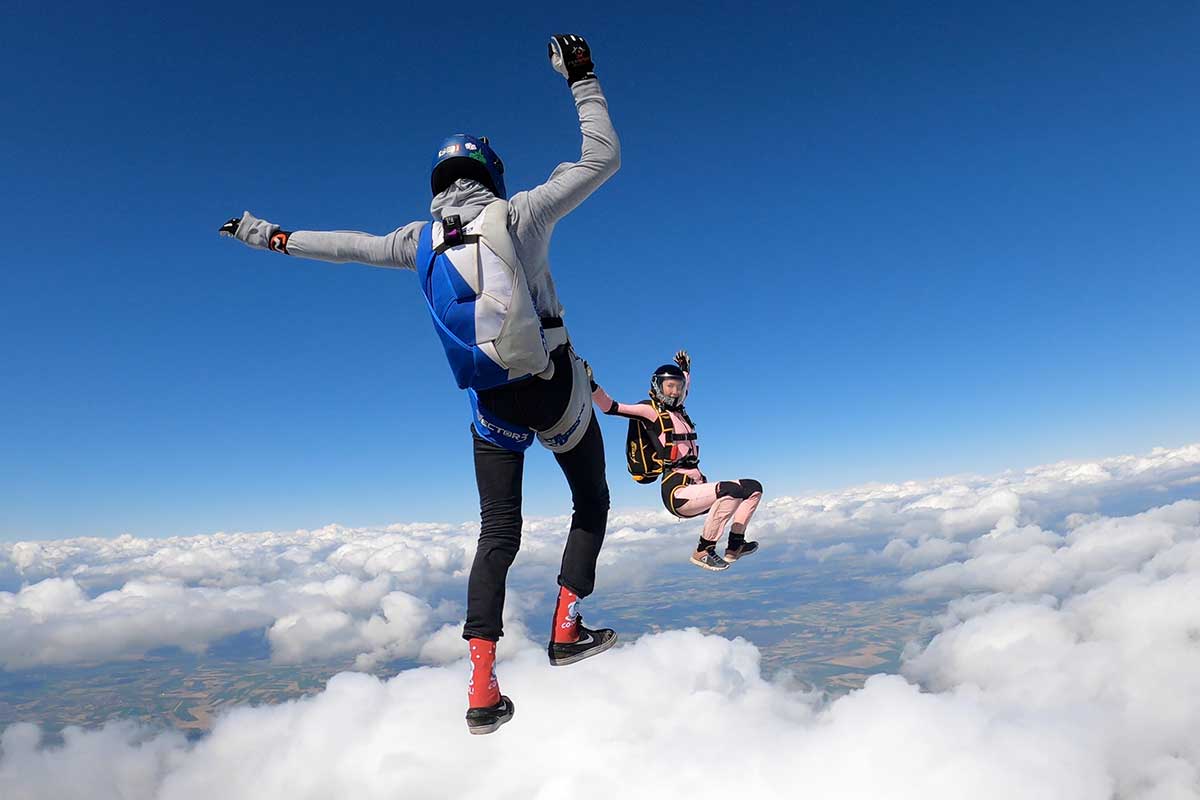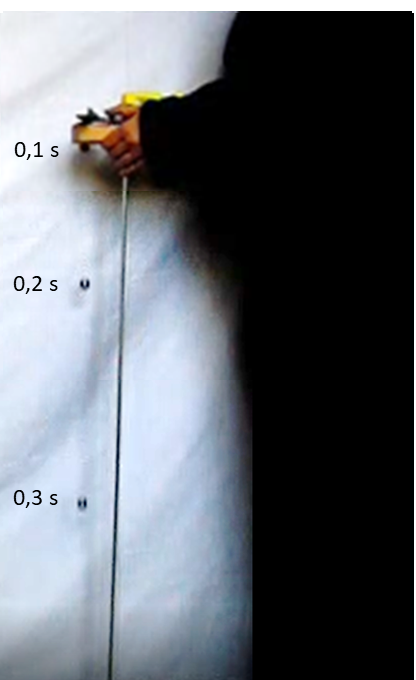Why does the fall speed of a body (attracted by gravity) not depend on its mass?

If we hang an object from a spring, it stretches a certain length; if we double the mass of the object, the spring stretches twice as much. In other words, the gravitational force with which the Earth attracts the body is proportional to its mass. The greater the mass, the greater the force – something we take advantage of when making scales.
But what happens to the motion of a body subject to gravitational force? Using the fast-motion video function of my mobile phone, I can record the fall of a marble that I drop from a certain height until it hits the ground. When I play the video in slow motion I see that in the first tenth of a second (0.1 s) the marble travels 5 cm, after 0.2 s it has fallen about 20 cm, and after 0.3 s it has fallen about 45 cm. The speed of the marble is not constant, it increases with time (it accelerates): for every passing second, its speed increases by about 10 m/s (it has a constant acceleration g of about 10 m/s2).

When we drop a marble, we can see that its falling speed is not constant, but accelerating.
We now record a video of the marble and a stone, both being dropped from the same height, at the same time. We see that they descend at the same time and hit the ground simultaneously: their velocity increases during the fall, but at the same rate for both of them. We conclude that the stone, which has a greater mass, also has an acceleration of 10 m/s2 (note: the same thing happens if we throw a stone and a marble upwards with the same starting velocity: they rise at the same time, except that they decelerate as they rise, at a rate of 10 m/s2).
This observation summarises many of the results obtained by Galileo Galilei (legend has it that some of them were obtained from the tower of Pisa), which allow us to conclude that, near the surface of the Earth, bodies acting under the force of gravity move with a constant acceleration that does not depend on their mass, contrary to the Aristotelian idea perpetuated by scholasticism. The force of gravity does depend on the mass of the body, but its acceleration (which coincides with the gravitational force per unit mass, 10 Newton/kilogram) does not.
Why did it take so long to reach this conclusion, which often contradicts our experience? If I drop two identical pieces of paper (equal masses), one of which is crumpled and rolled into a ball, it reaches the ground sooner than the flat, smooth paper, which flutters and falls slowly. And then there is also the frictional force of air, which complicates things a lot, because it depends on the shape and speed of the body (and not on its mass). When a body descends in air or another fluid, what determines its acceleration is the gravitational force minus the friction (which has the opposite direction to the gravitational force). Therefore, the acceleration of each body is different and changes during the fall. Generally it is less than g, it can even be zero – that is, the velocity would be constant – to the relief of those who jump with a parachute or paraglider.
For example, if I drop a hammer and a feather simultaneously, the hammer hits the ground first, so its acceleration is greater (note: both the gravitational force and the friction are greater for the hammer, what matters for the acceleration is that the difference between the two is greater than in the case of the feather). On the Moon, where there is no air, the hammer and the feather fall at the same time and hit the ground at the same time, as verified by an astronaut on the Apollo XV mission (although on the surface of the Moon, g = 1.6 m/s2). The same happens if we put a coin and a cork ball in a tube and extract a good part of the air it contains. And what about the marble or the stone in our video? In its 1-metre journey, the force of friction with the air is much less than the gravitational force and its effect is not noticeable. From a seventh floor or higher, it would be a different matter…
If you read this explanation carefully, you will see that it does not answer the question «why» these phenomena occur, but a different question, «how» (what does it depend on, how much is it worth, etc.) is the movement of bodies when gravity or other forces act on them. This is the only question that physics can answer, trying to cover more and more different phenomena in the explanation and being able to make correct quantitative predictions that coincide with experimental measurements.
Answered by Chantal Ferrer Roca, professor in the Department of Applied Physics and Electromagnetism at the University of Valencia.
«Mètode’s whys and wherefores» is a popular science section in which readers can submit their scientific doubts or questions and an expert on the subject will answer them. You can submit your questions with this form. Among all those we publish, a set of Mètode publications will be drawn every quarter.





